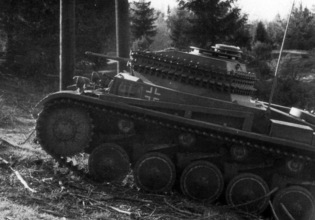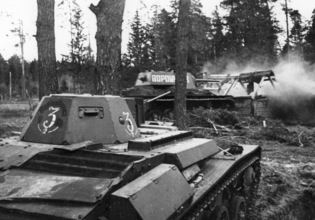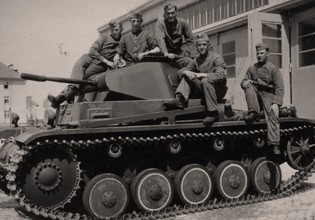By the middle of the 1920s, the British army received a new generation of medium tanks that served for a long time. The Medium Tank Mk.I and Medium Tank Mk.II became the first turreted medium tanks in the world. A good design and high reliability guaranteed a long life for these tanks, but by 1926, the British military was already thinking about their replacement. A Vickers design, the Medium Tank Mk.III, was suitable for the job. Even though the rather interesting design became the ancestor of a series of later tanks, including Soviet and German ones, its life in the British army was a difficult one.
Export Evolution
Even though the Medium Tanks Mk.I and Mk.II were well designed, the military had complaints regarding them. The front mounted engine impacted the driver's visibility. The top speed of the tanks was also unsatisfactory. 24 kph was enough for the 1920s, but the military's expectations grew. This makes sense: there is no such thing as a tank that's too fast, and improving a tank's speed can only improve the tank's fighting qualities.
The new medium tank concept did not come from nothing. Oddly enough, its progenitor was a heavy tank. In 1922, the Ministry of War compiled requirements for a heavy tank. According to them, the tank had to have a low silhouette, rear engine, and the ability to cross 2.8 meter wide trenches. Its armament consisted of a 3-pounder (47 mm) gun and two machineguns in sponsons. The Vickers company joined the project, reworked it, and proposed the installation of the gun in a rotating turret. Eventually, that project turned into a completely different tank, known as the A1E1 Independent. Nevertheless, a tank with a rear engine, one cannon in a turret, and machineguns on the sides was not forgotten.
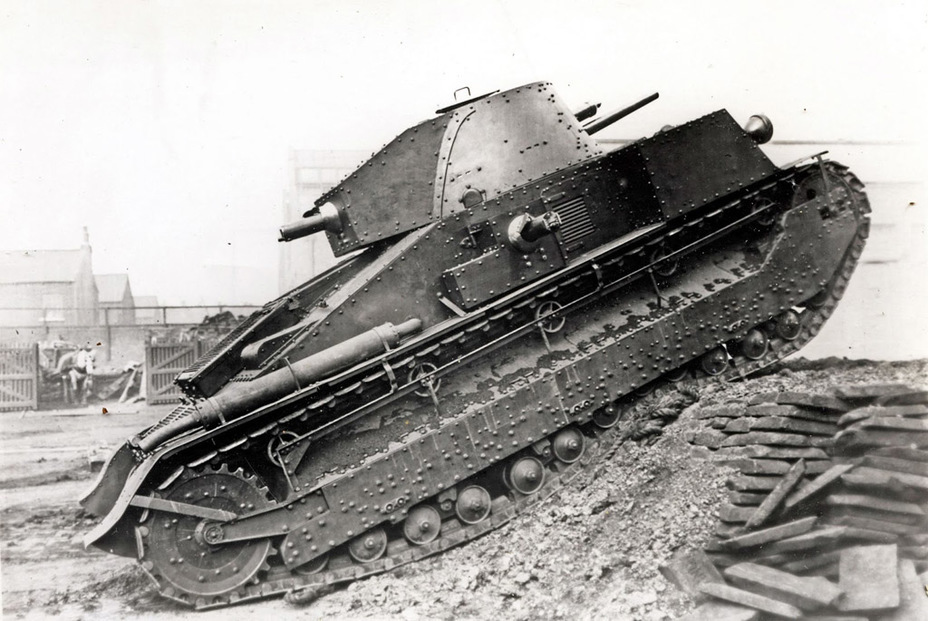
The design of this tank began in 1925. The tank, indexed Medium Tank Mk.C, was never ordered by the British army, and was built exclusively for export. This tank was based on the Birch Gun. Like the SPG, the export tank received 13 road wheels per side, and the general design of the suspension makes it easy to guess its origins. However, that's where the resemblance ran out.
As in the 1922 specifications for a heavy tank, the fighting compartment was moved to the front and the engine compartment to the rear. The tank used a water cooled Sunbeam Amazon 110 hp 6-cylinder aircraft engine. This engine granted the tank a decent 10 hp per ton, giving the 11.6 ton tank a very respectable to speed of 32 kph.
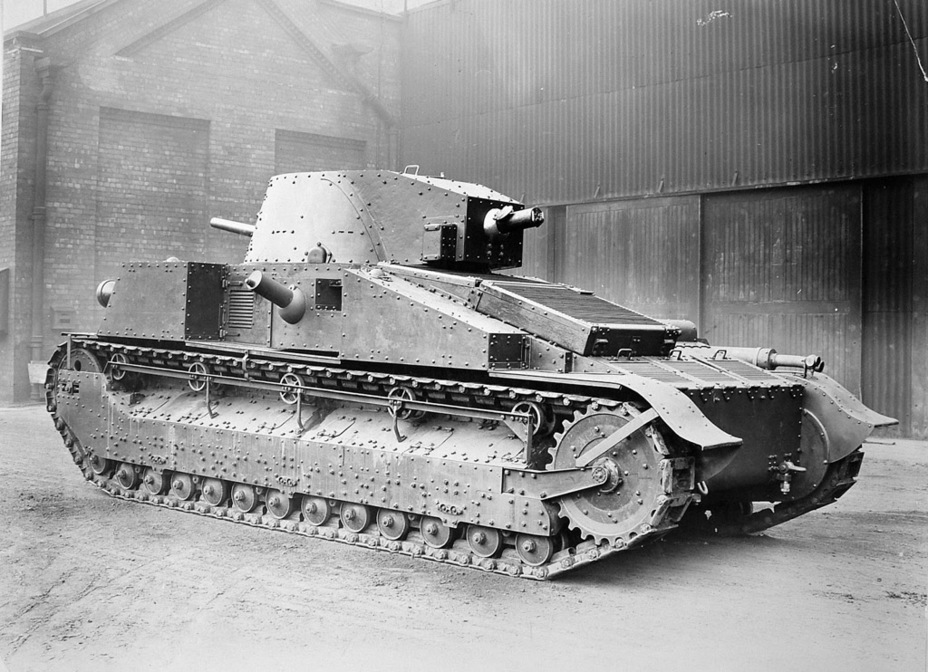
The machineguns in the sides of the hull also migrated here from the heavy tank's requirements, but they were installed in ball mounts and had such a narrow range that they were almost completely useless. The idea was that the tank would drive on top of a trench and the machineguns would clear it out, but the hard part was getting to the trench with a mere 6.5 mm of armour. That much armour could only reliably protect from small arms fire at several hundred meters.
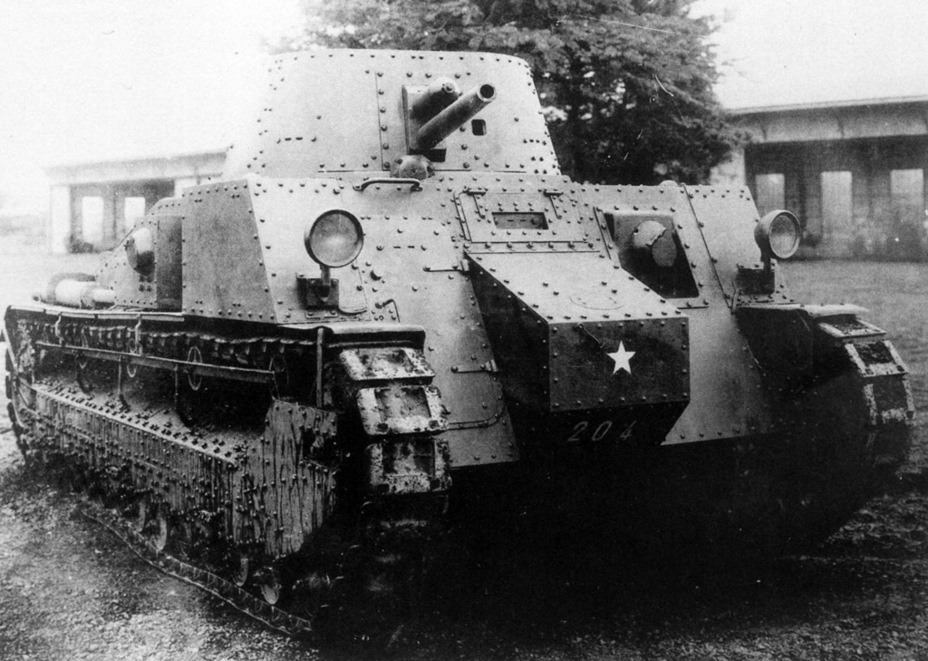
The turret armament was no less interesting. The front of the turret only housed a 57 mm 6-pouder gun, like the ones used on the famous «rhombus» tanks. There was also a machinegun in the turret, but it was located in the rear, inside the turret bustle. It is unclear why this was done.
In order to compensate for the lack of a coaxial machinegun, the designers installed another machinegun in the front of the hull. The 5 crewmen of the Medium Tank Mk.C had 1 cannon and 4 machineguns at their disposal.
Vickers engineers decided to place a door in the right part of the front. This was not it for wonders on this side: there was also a special bulge for the driver's legs.
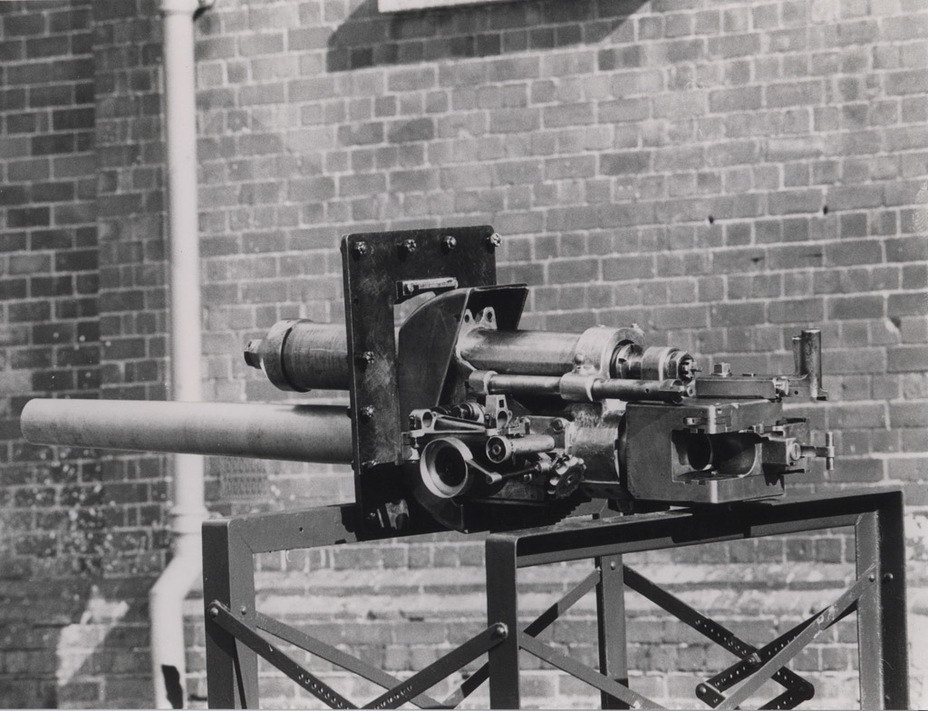
A prototype of the Medium Tank Mk.C was finished in 1926. The British army put the tank through trials and quickly rejected it. The military did not want to sacrifice armour for speed, and some engineering decisions made in the design were quite puzzling.
On the other hand, a foreign customer was found quickly. The Japanese bought the tank in 1927, and it became the progenitor of the Type 89 medium tank. Curiously enough, the Japanese kept the door in the front, the hull gun, and the curious arrangement of the armament in the turret.
The Medium Tank Mk.D followed. Ireland bought it in 1929. The tank served in the Irish army until 1940. Its gun served even longer as a part of a fortification line in Curragh, where the tank spent all its life. The gun survived to this day and can be seen in Curragh (County Kildare).
Three Heads are Better than One
Even though the Medium Tank Mk.C was a dead end, Vickers managed to benefit from its creation. Not only did it sell the tank abroad, but the design process itself gave them priceless experience. This experience came in handy before the Mk.C even left the factory.
In 1926, the Royal Tank Corps began working on requirements for a new medium tank based on the first exercises with the Medium Tanks Mk.I and Mk.II. The requirements were completed in June. For starters, the idea of hull machineguns was deemed senseless, since such weapons had very poor fire mobility. The obvious conclusion was the introduction of separate turrets, but the Medium Tank Mk.I/Mk.II layout could not support this solution.
The only way was to move the engine to the rear of the tank and put the turrets int he front. The mass of the tank had to remain at 15.5 tons, since British pontoons could not carry a weight of over 16 tons. The tank was also required to be able to destroy enemy tanks at 1000 yards (900 meters). The presence of a radio was mandatory, as was moving the fuel tanks from inside to hull to the sides. Another requirement was a reduction in noise.
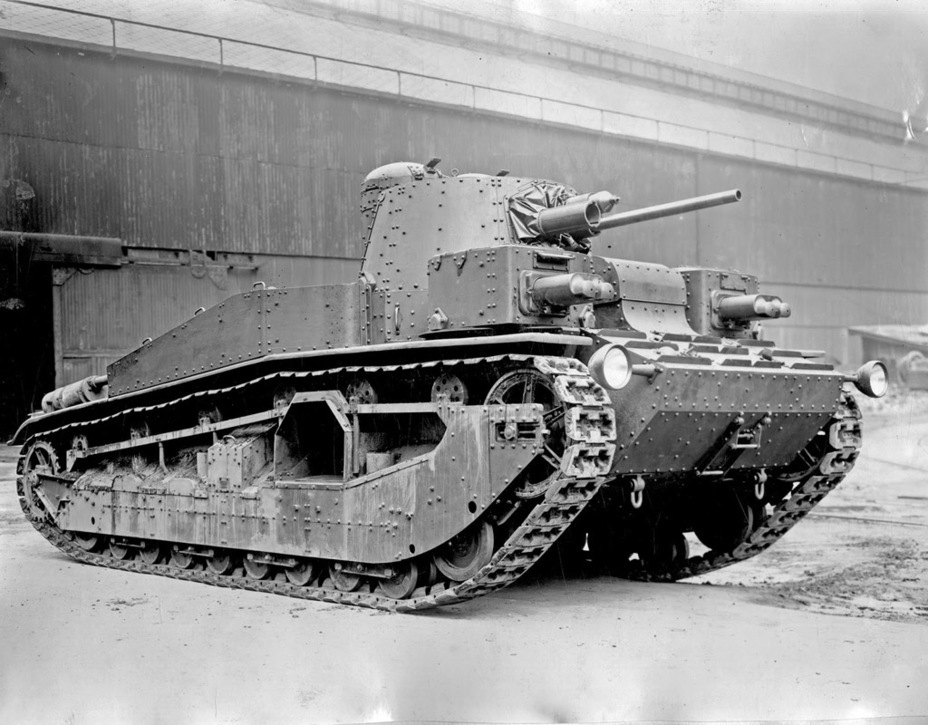
The new Vickers medium tank concept was ready quickly: in September of 1926. The engineers already had experience with the Medium Tank Mk.C, along with the A1E1 Independent, the heavy tank that was built according to the requirements from 1922.
According to calculations, the mass of the new tank, indexed A6, was about 14 tons with 14 mm of armour in the front and 9 mm on the sides. This was enough to protect the tank from rifles and machineguns. Like in the A1E1 Independent, the driver's cabin was placed in the center of the hull, and the turrets were to its sides. A turret with a 3-pounder gun and coaxial machinegun was placed in the center of the hull. Another turret was placed behind the main turret with an AA machinegun, but its lifespan was brief. The designers quickly removed it to lose weight.
The engine was placed in the rear of the hull. Two engine variants were proposed. The first was a 120 hp engine that gave the tank a top speed of 22.4 kph. The second, a much more interesting choice, was a 180 hp V-shaped Armstrong-Siddeley engine. The tank could achieve a top speed of 32 kph, with over 10 hp/ton.
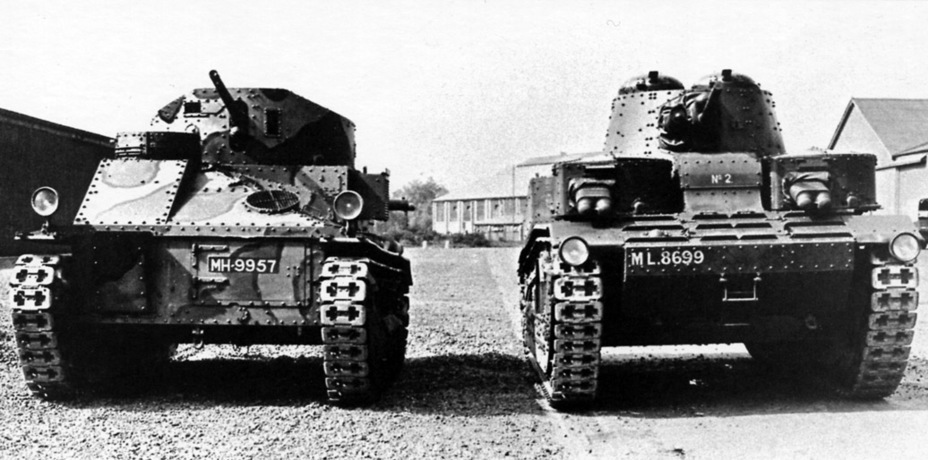
A wooden model of the tank was ready by March of 1927. The model was accepted, and two prototypes of the tank were approved: A6E1 and A6E2. Both tanks lost their AA turrets and two Vickers machineguns were installed in each machinegun turret. Since both turrets only housed one man, this decision is unlikely to have made his life easier.
The second tank was equipped with a Wilson planetary gearbox with a hydraulic mechanism. ROF Woolwich was selected as the organization that would assemble the tank. The mass of the A6 reached 16 tons, giving the tank the index «16-tonner», which would often be used in correspondence.
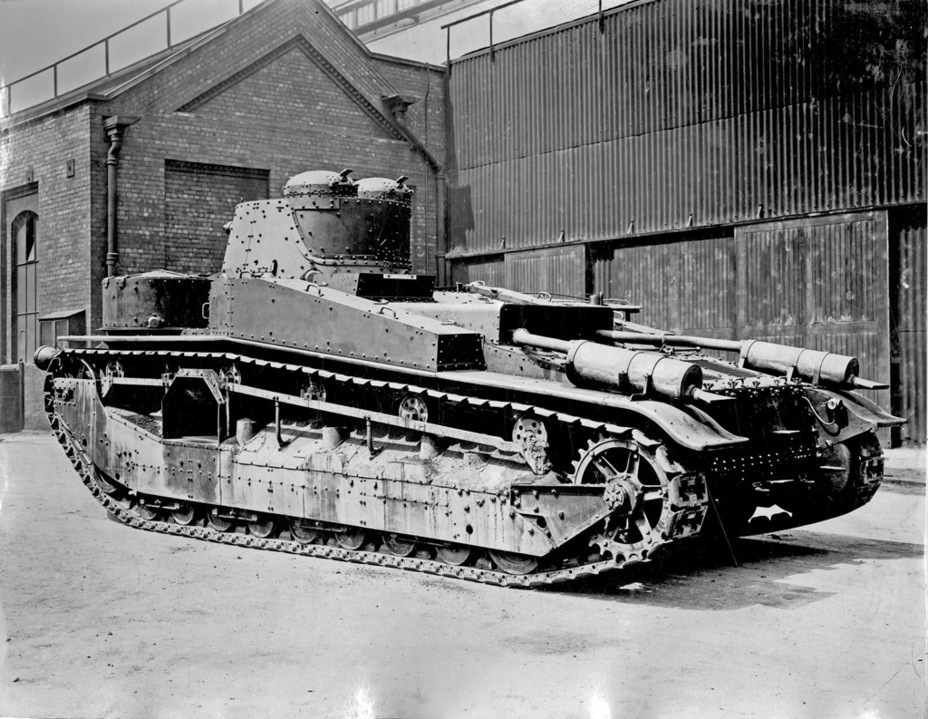
The first tank, A6E1, registration number T.404, was ready at the beginning of 1928. Overall, its design was the same as the wooden model. The hull, elevated at the front, offered comfortable working conditions for the crew. Like the A1E1 Independent, the tank received hatches in the sides. To improve resistance to bullets, deflector plates were installed in the front. As the requirements stated, the majority of the fuel (416 L) was outside the hull. The remaining 37.5 L were inside the tank to improve its center of gravity. The main turret had two commander's cupolas.
The tank was not without its oddities. The driver had no observation slits, so when the hull was closed he had to drive the tank blindly. There was also no room for a radio, since the turret had no bustle.
The second tank, A6E2, looked almost identical to its brother. The tank were often called 16-tonner #1 and #2.
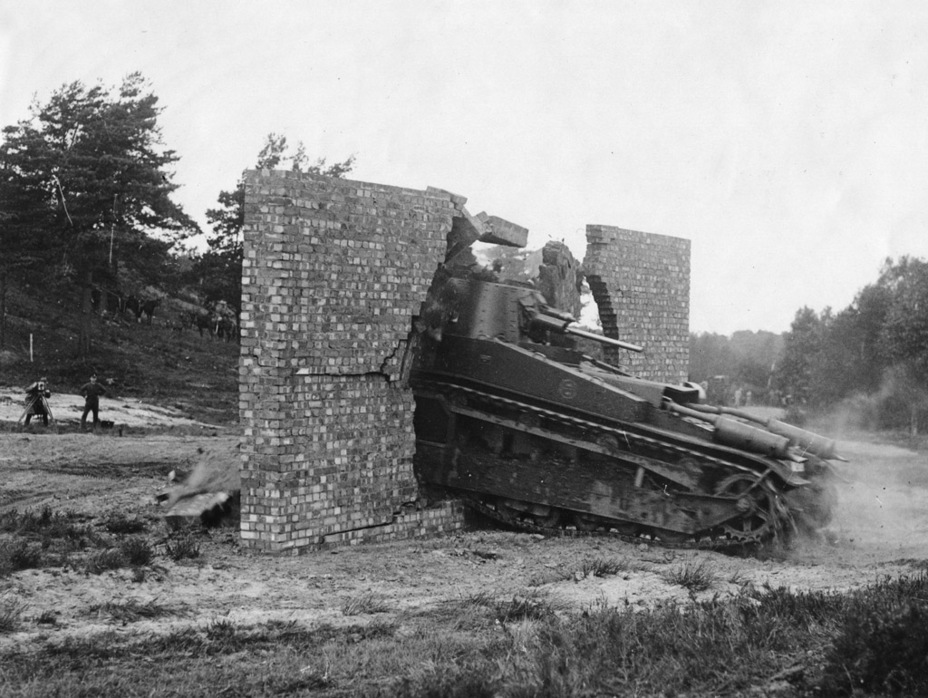
Both tanks were shipped to the Mechanical Warfare Experimental Establishment (MWEE) in Farnborough. There, A6E1 received the registration number ML 8698 and A6E2 — ML 8699. During trials, the A6E2 received a new engine: the 180 hp Ricardo CI. It was quickly discovered that the new engine was not as good, and it was replaced. It was also proposed that a pair of Rolls Royce Phantom I engines with a combined power of 190 hp be tested in the A6E1, but this idea was never implemented.
It's worth noting that the A6's designers underestimated their creation. The tank could achieve a top speed of 41.5 kph, very respectable for the time. The suspension, borrowed from the Medium Tank Mk.II, turned out to be a little weak for the new tank. In 1929, Vickers engineers proposed three replacement designs, two of which were modifications of the old suspension and one of which required a redesign of the whole tank. Another unpleasant but predictable surprise was the result of firing trials at Lulworth. It turned out that handling two machineguns in a small turret was too difficult.

The results of the trials led to an improved design indexed A6E3. Upon arrival at the MWEE proving grounds, the tank received the serial number MT 9637. The new tank received machinegun turrets similar to those used on the A1E1 Independent. The amount of machineguns was reduced to one per turret, and the turrets themselves were made a little roomier by shifting the machinegun to the right. The amount of cupolas on the main turret was also reduced to one.
The tank was equipped with a new suspension. The road wheels were grouped together into four groups of two bogeys each.The suspension was similar to the one used on the Vickers Mk.E by John Carden and Vivian Loyd. The new design did not result in noticeable improvements, but increased the tank's weight to 16.25 tons.
In order to improve the speed of the tank, the A6E3 was equipped with a powerful 500 hp diesel Thornycroft RY/12 engine, which was used on speedboats. It is not known how much the top speed of the tank increased, but this did not help the suspension any.
Failed Handover
Despite problems with the suspension, the A6 was a good design, suitable for replacing the Medium Tank Mk.II. Specifications were made for an improved A6, indexed Medium Tank Mk.III.
Often, the names A6 and Medium Tank Mk.III are mixed up. The Medium Tank Mk.III did not have the A6 index. The two tanks were very much alike, and even the mass was the same at 16 tons. Since no breakthrough was made with the A6E3, the Medium Tank Mk.III used a suspension similar to the Medium Tank Mk.II. The design was changed a little, but overall remained the same. The engine was also left alone. The length of the tank remained, but its width grew slightly. The machinegun turrets migrated from the A6E3.
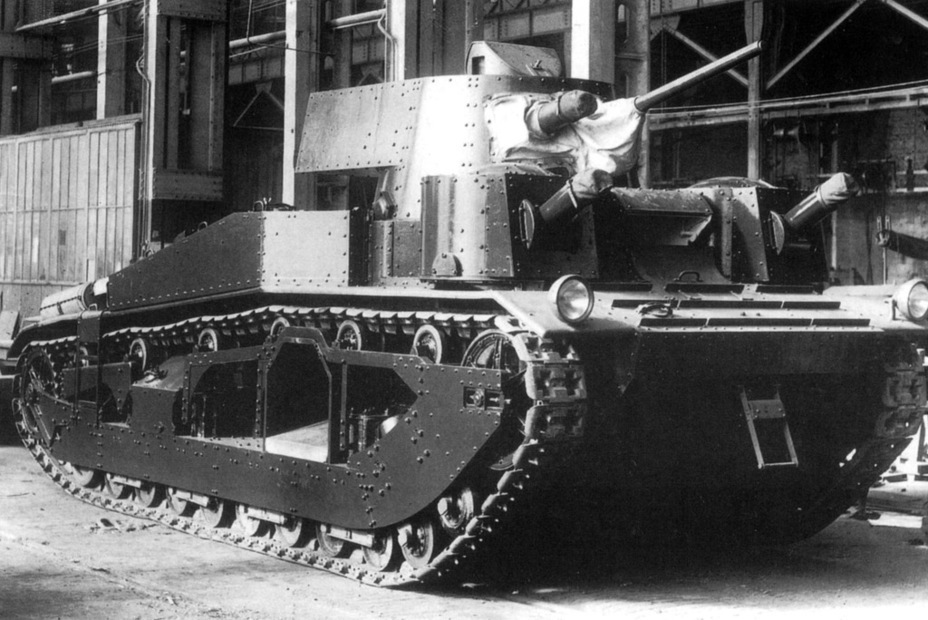
Medium Tanks Mk.III E1 and E2 were built at ROF Woolwich in 1929. They received registration numbers T.870 and T.871. One of their main differences from the A6 was the turret. The A6 conical turret could not fit a radio station, so the new tank received a turret with a bustle that could fit a No.9 radio. Another difference was the commander's cupola. It was shifted to the left and replaced with a design borrowed from the Medium Tank Mk.IIA.
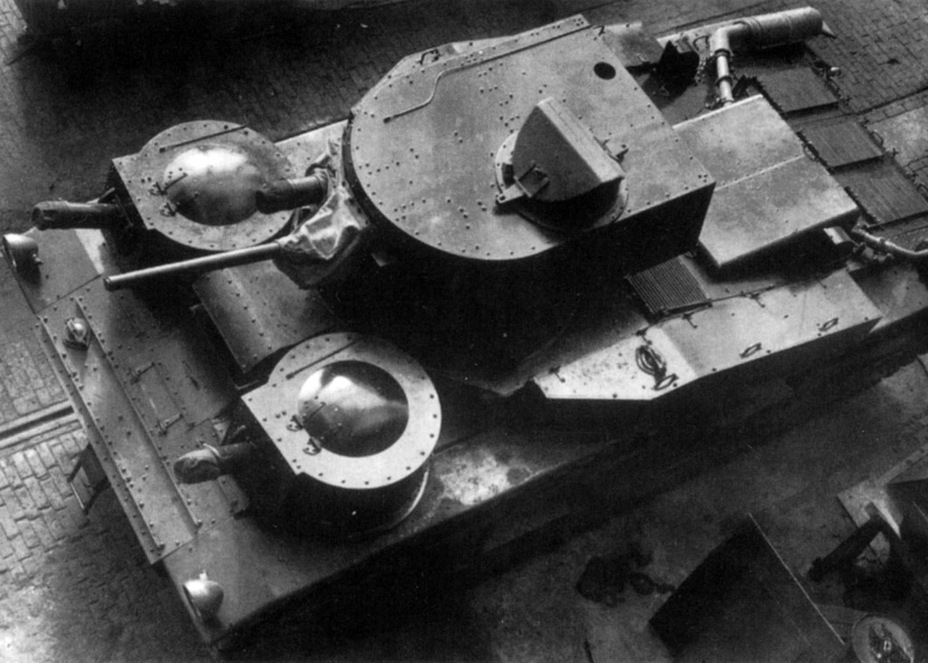
Alas, the appearance of the Medium Mk.III coincided with the sad events that caused a crisis in British tank building. The «Great Tank Scandal» caused the disbanding of the Experimental Mechanized Force, formed in 1927 bu Colonel John Fuller. Soon, the worldwide financial crisis struck the military budget. Since the navy remained a priority at the Ministry of War, the budget cuts were primarily compensated for in other branches. Tank building was one of the scapegoats.
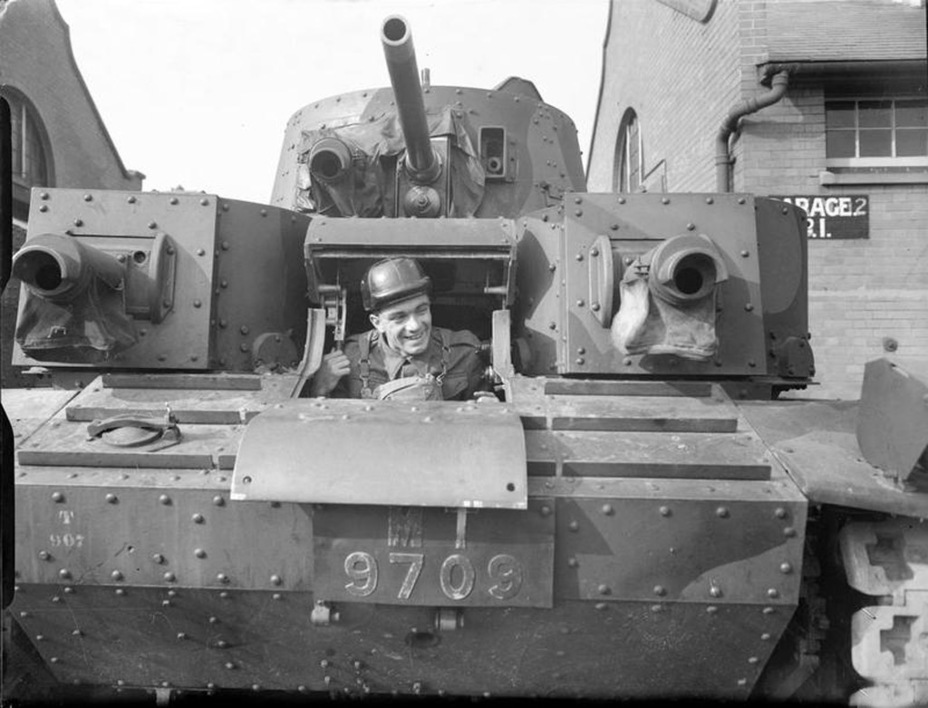
Later, the Medium Tanks Mk.III E1 and E2 were sent to MWEE, where they received refistration numbers MT 9707 and MT 9708. In 1931, Vickers built a third (and last) Medium Tank Mk.III. The tank, numbered T.907 and MT 9707, differed from its predecessors in its modified suspension. Trials which lasted until 1933 showed its superiority over the Medium Tank Mk.II. However, there were problems with the suspension that were reduced on the Medium Tank Mk.III A3, but not by a lot.
A reduction in financing and dragging on of the trials doomed the Medium Tank Mk.III. By 1934, it was obvious that it's too late to put this tank into mass production.
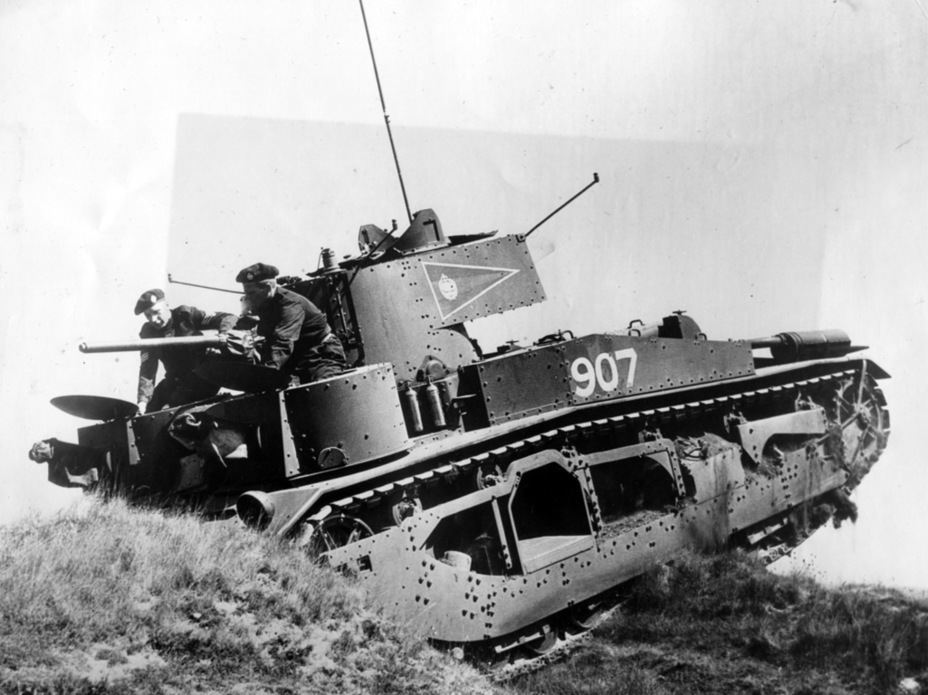
This sad end did not mean that the Medium Tanks Mk.III and A6 would not end up in the military. Unlike its predecessors, the Medium Tank Mk.III ended up being used by the army. In 1934, the tanks were included in the tank brigade that became the reincarnation of the Experimental Mechanized Group. The brigade, created in 1931 in Solsberry, consisted of three mixed battalions. The Medium Tanks Mk.III were included in the brigade as commanders' tanks. The MT 9707 was used heavily by the brigade before, and was soon taken apart. The fate of MT 9708 was even worse: a fire broke out during exercises. The tank burned out and had to be written off. The MT 9709 served for much longer, until 1938.
The Medium Tanks Mk.III received positive feedback during their service in the tank brigade. The level of comfort of use and service was higher than that of their predecessors.
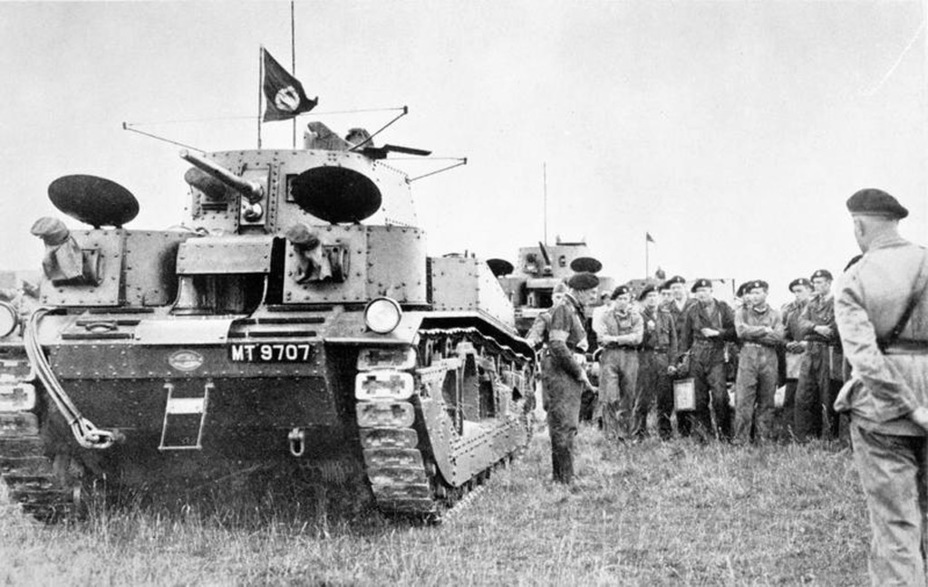
The «Vickers 16-ton» did not go unnoticed by tank building nations of the world. The British military considered the idea of two machinegun turrets successful. The idea later migrated to light tanks, such as the Vickers Mk.E Type A. The idea of additional machinegun turrets was aso used on the British Cruiser Tank Mk.I and German Nb.Fz.
The Medium Tank Mk.III made an even more noticeable impression on Soviet tank building. In 1930, a purchasing commission headed by the chief of the UMM, A. Khalepskiy, arrived in Great Britain with the goal of buying tanks. Vickers offered the standard set of export tanks: the Carden-Loyd Mk.VI, the light Vickers Mk.E, and the Medium Tank Mk.II. All three tanks were purchased, the Carden-Loyd tankette later turned into the T-27, and the Vickers Mk.E into the T-26.
As for the Medium Tank Mk.III, the British first refused to show it. Later, the position changed. The cost for examining the documentation was 20,000 pounds Sterling, and another 16,000 for each tank. In addition, the deal required larger orders of other tanks. Finally, Semyon Aleksandrovich Ginzburg, who later became a key figure in Soviet tank building, obtained detailed information about the tank through trickery.
It's hard to call the resulting T-28 a copy of the Medium Tank Mk.III. Ginzburg headed the development of the T-28, but only took the overall concept of a medium tank with a rear engine compartment, three turrets, and 16-17 ton mass. In all other respects, it was a completely different tank.
Translated by Peter Samsonov. Read more interesting tank articles on his blog Tank Archives.
Sources:
- Russian State Military Archive
- Medium Marks I-III, N.W. Duncan, Profile AFV 12, Profile Publications Limited
- http://tankdevelopment.blogspot.ru
- Author's photo archive
